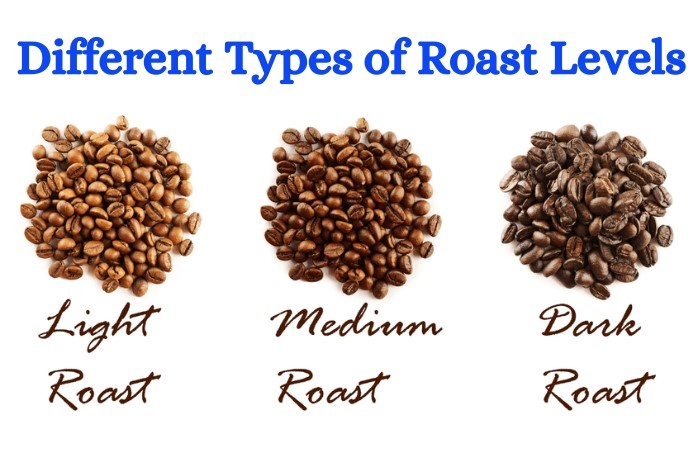How To Choose Perfect Coffee Beans: A Complete Guide

Choosing the right coffee beans plays a significant role in crafting the best, flavorful cup of coffee every day. Whether you’re a seasoned coffee lover or just starting, selecting the perfect coffee beans will enhance your coffee experience.
This article will help you understand the essential factors involved in selecting coffee beans that match your taste and lifestyle, from learning about coffee bean types to exploring flavor profiles. Let’s dive into everything you need to know to make the best choice for a delightful coffee experience.
Understanding the Basics of Coffee Beans
Coffee beans are the core ingredient of every cup of coffee, and understanding their basics is crucial to making informed choices that improve your coffee experience. Here are some key factors to consider when choosing coffee beans:
1. Types of Coffee Beans
There are two most common types of coffee beans: Arabica and Robusta.
- Arabica Coffee Beans: Known for their smooth, complex flavor and aromatic qualities.
- Robusta Coffee Beans: Offer a stronger, more bitter taste and higher caffeine content.
Understanding the differences between Arabica and Robusta will help you make an informed decision based on your taste preferences.
2. Origin Matters
Coffee beans are grown in regions called the “coffee belt,” with over 70 equatorial countries involved in production. The growing region significantly impacts the flavor profile of the coffee. For example:
- Ethiopian and Kenyan coffee beans: Often have floral and fruity notes.
- Costa Rican and Guatemalan coffee beans: Clean, balanced, with fruity tones and moderate acidity.
- Brazil, Peru, and Colombian coffee beans: Nutty, balanced, and chocolatey.
The origin plays a major role in determining the coffee’s flavor, so exploring beans from different regions can enhance your coffee experience.
3. Types of Roast Levels

Coffee beans come in various roast levels, each affecting flavor. Here are the three most common roast levels:
- Light Roast: Preserves the original flavors and acidity of the beans, offering fruity, bright, and tangy notes. Ideal for espresso or black coffee.
- Medium Roast: Balances flavor, aroma, and body, bringing out the natural sweetness with a smooth, well-rounded profile. Perfect for espresso or pour-over coffee.
- Dark Roast: Bold, smoky flavors with less acidity, ideal for those who enjoy intense coffee.
4. How Freshness Affects Your Brew
Freshly roasted coffee beans make a significant difference in the taste of your coffee. Always check the roast date on the package and aim to use the beans within two to four weeks for the best flavor.
How to Choose the Best Coffee Beans: A Step-by-Step Guide
If you’re a beginner or a seasoned coffee drinker, selecting the right coffee beans can be overwhelming. To make the process easier, here are some essential steps to help you choose the best coffee beans every time.
1. Know Your Coffee Taste Profile
Identify the flavor profiles you enjoy in your coffee. Do you love fruity notes, or do you prefer a deep, chocolatey taste? Knowing your flavor preferences will guide you in selecting the right coffee beans.
2. Growing Elevation
The elevation at which coffee is grown has a significant impact on its flavor. You’ll often see the elevation printed on the coffee packaging, followed by “MASL” (Meters Above Sea Level). Here’s how elevation affects flavor:
- Low Elevation (1250 MASL): Earthy flavor, fuller body, and refined acidity.
- Medium Elevation (1250–1500 MASL): More complex flavors with sweetness and acidity.
- High Elevation (1500–2200 MASL): Aromatic flavors with fruity body and strong acidity.
3. Considering Brewing Methods
Your brewing method determines the ideal grind size and roast level for your coffee. For example, an espresso machine requires fine grounds, while a French press works best with coarse grounds for a richer, full-bodied flavor.
4. Budget for Your Coffee Beans
Setting a budget for your coffee beans helps you find quality coffee without overspending. Specialty coffee beans often come with a premium price due to their unique flavors and origins, so balance the cost with the quality that suits your needs.
5. Decoding Coffee Packaging
Pay attention to the information on the coffee package, including the roast level, roast date, origin, and tasting notes. This will help you select the freshest and most flavorful coffee beans.
Conclusion
Choosing the best coffee beans is a blend of art and science. By understanding your preferences, exploring different origins, and experimenting with roast levels, you can enhance your coffee expertise and elevate your brewing experience. So, take your time to enjoy the process and brew the perfect cup of coffee every time.
FAQ
1. How can I know if the coffee beans are fresh?
Check the roast date on the packaging. Freshly roasted coffee beans are best used within two to four weeks of roasting.
2. Which roast level is best for beginners?
Medium roast is the ideal choice for beginners because it offers a balanced flavor.
3. What is the best way to store coffee beans?
Store coffee beans in an airtight container in a cool, dark place for optimal freshness.
4. Are expensive coffee beans always better?
Not necessarily. The taste and freshness of the beans are more important than the price. Choose based on flavor, not just cost.

helpful
thanks